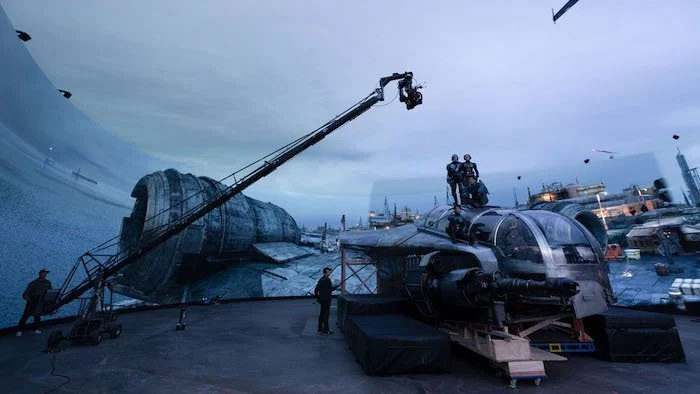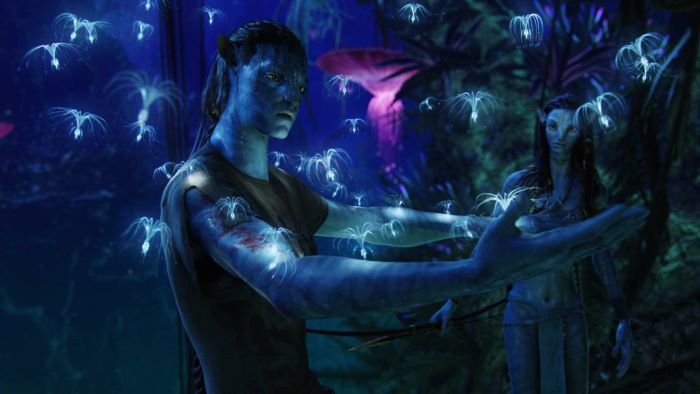ILM And Weta Lead The Way In Television And Movie Effects: How Do They Stack Up?
Image Source: CultureSlate
Since the first movie special effect appeared in 1895 in Alfred Clark’s 18-second short The Execution of Mary Stuart, motion picture special effects have been an integral part of movie-making. It is just as important as writing and acting. Georges Méliès is considered the father of modern movie special effects and is well known for his 1902 film A Trip to the Moon. In 1933, Merian C. Cooper created what is probably the most well-known effect in movie history: King Kong.
In those early days of the late 19th and early 20th century, directors developed and discovered several techniques to create effects that are still used today like stop-action substitute, split-screen masking, double exposure, miniatures, frame tinting, glass shots (also known as matte paintings), props, Schufftan process, rear projection, and combination shots. Through the decades, the effects have advanced exponentially. Artists like Willis O’Brien, Ray Harryhausen, Phil Tippett, and Stan Winston, to name a few, have pioneered the way for future effects artists and companies to further push the boundaries between reality and fantasy. Two companies leading the way are Industrial Light & Magic (ILM) and Wētā Workshop. The Master and the Apprentice.
RELATED:
How They Got Started
Image Source: ILM
ILM began in 1975 as a necessity. George Lucas needed an effects department to bring his imagination to life in Star Wars. As such, he created ILM, which continued in various forms after Star Wars was released in 1977. ILM is considered the gold standard in movie special effects, with studios in San Francisco, Vancouver, Singapore, London, and Sydney. Since its inception, ILM has created special effects for over 350 feature films, won 3 Emmy Awards, 15 Academy Awards for Best Visual Effects, and received 33 Academy Awards for Scientific and Special Achievements.
Image Source: Cartoon Brew
Twelve years after ILM, Wētā Workshop was founded in 1987 by Richard Taylor and Tania Rodger in Wellington, New Zealand. While ILM encompasses all aspects of special effects under one company name, Wētā is split between Wētā Workshop and Wētā FX (1993), with Wētā Workshop handling concept design and manufacturing and Wētā FX handling visual effects and animation. Despite their similar names, the two are considered separate entities. Wētā Workshop has won multiple awards for their work on The Lord of the Rings trilogy (2001-2003), King Kong (2005), District 9 (2009), Bladerunner 2049 (2018), and Dune (2021). Wētā FX is known for its performance-driven characters like Gollum, Kong, Neytiri, and Caesar, and their world-building in Middle-earth and Pandora. In fact, Wētā FX has won 8 awards just on Avatar alone.
What Are We Working With?
Image Source: ILM
It’s common knowledge in the manufacturing world that having the right tools can make anyone look like they know what they’re doing. If you’re skilled and experienced enough, a maker can make most things with the tools on hand. Companies like ILM and Wētā only use the best technologies and computer software. Since the 1980s, ILM has used computer graphics and digital imaging in feature films, developing breakthrough techniques such as morphing, enveloping, and film input scanning technology. Most recently, ILM unveiled its StageCraft real-time virtual production platform and StageCraft LED Stages, allowing storytellers the ultimate flexibility in planning, developing, and capturing their vision.
Wētā FX uses a lot of its own proprietary software built and maintained in-house, as well as standard industry software such as 3D Equalizer, Barbershop, Eddy, Gazebo, Houdini, Katana, Loki, Lumberjack, Manuka, Mari, Maya, MotionBuilder, Nuke, Photoshop, Synapse, Tissue, Totara, and Massive. ILM also uses Autodesk Maya. MaterialX originated at Lucasfilm in 2012, and it has grown into the central format for material description at Industrial Light & Magic (ILM) since the production of Star Wars: The Force Awakens. The project was released as open source in 2017, with companies including Sony Pictures Imageworks, Pixar, Autodesk, Adobe, and SideFX contributing to its ongoing development. In recent years, MaterialX has been incorporated into widely-used applications and standards, including Maya, 3ds Max, Substance Designer, Arnold, Renderman, Autodesk Standard Surface, and Universal Scene Description.
When you consider each company’s filmography, which spans films and television, it’s clear that ILM and Wētā are the best of the best and with that comes some friendly competition. In 2005, George Lucas described Wētā as how ILM was 20 years ago. In 2005 Lucas invited Peter Jackson to ILM to give Jackson an idea of how he wanted Wētā to go. Lucas warned Jackson that companies are like sharks. If they don’t keep swimming, they die. Likewise, a company must continue growing, or it will die.
“I think ILM, we’ve all agreed, has reached a level that we want to stick with. We don’t want to get any bigger. We’re the oldest, we’re the largest, we’re the most advanced. And that’s a fun position to be in.”
James Cameron had a different take:
“Wētā FX is the best. ILM does great work, but when it comes to the kind of emotive facial stuff we’re doing…I mean, Thanos? Come on. Give me a break.”
In 2005, Lucas said if a studio or someone else wanted to build a bigger shop, ILM wouldn’t necessarily try to compete. For the most part, both companies work independently, but on one occasion, ILM had to step in and help Wētā finish a scene on the first Avatar (2009).
Image Source: Wētā FX
For movie cinephiles and writers like myself, there is nothing better than great acting and dialogue in a movie or television series. Sometimes, the best special effects are the ones that don’t look special at all. Unfortunately, as special as they are, movies filled with special effects and no story are just two-hour kaleidoscopes. In the wrong hands, special effects can be used for less-than-desirable reasons. Regardless, ILM and Wētā are two of the best out there, and when one does well, it pushes the other to step up its game. Friendly competition is always healthy in the creative world.
READ NEXT:
Source(s): ILM, Wētā Workshop, Wētā FX, Listverse, Clemson U, Aninews, CinemaTech

















